Period 4 element on:
[Wikipedia]
[Google]
[Amazon]
A period 4 element is one of the
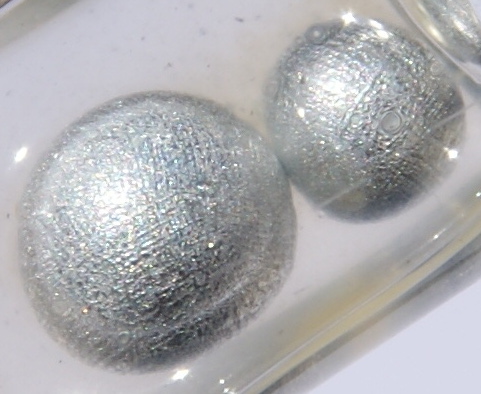

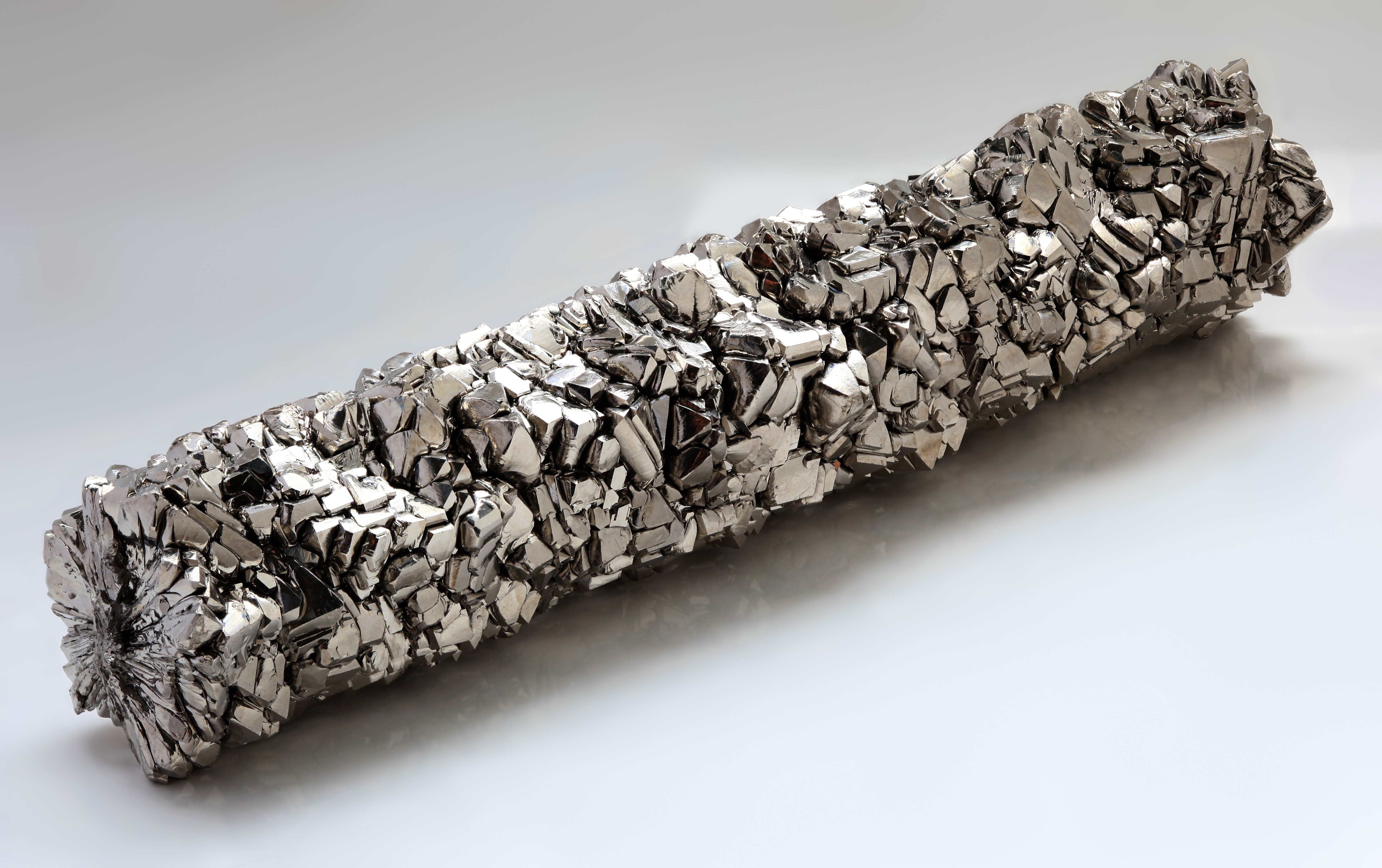

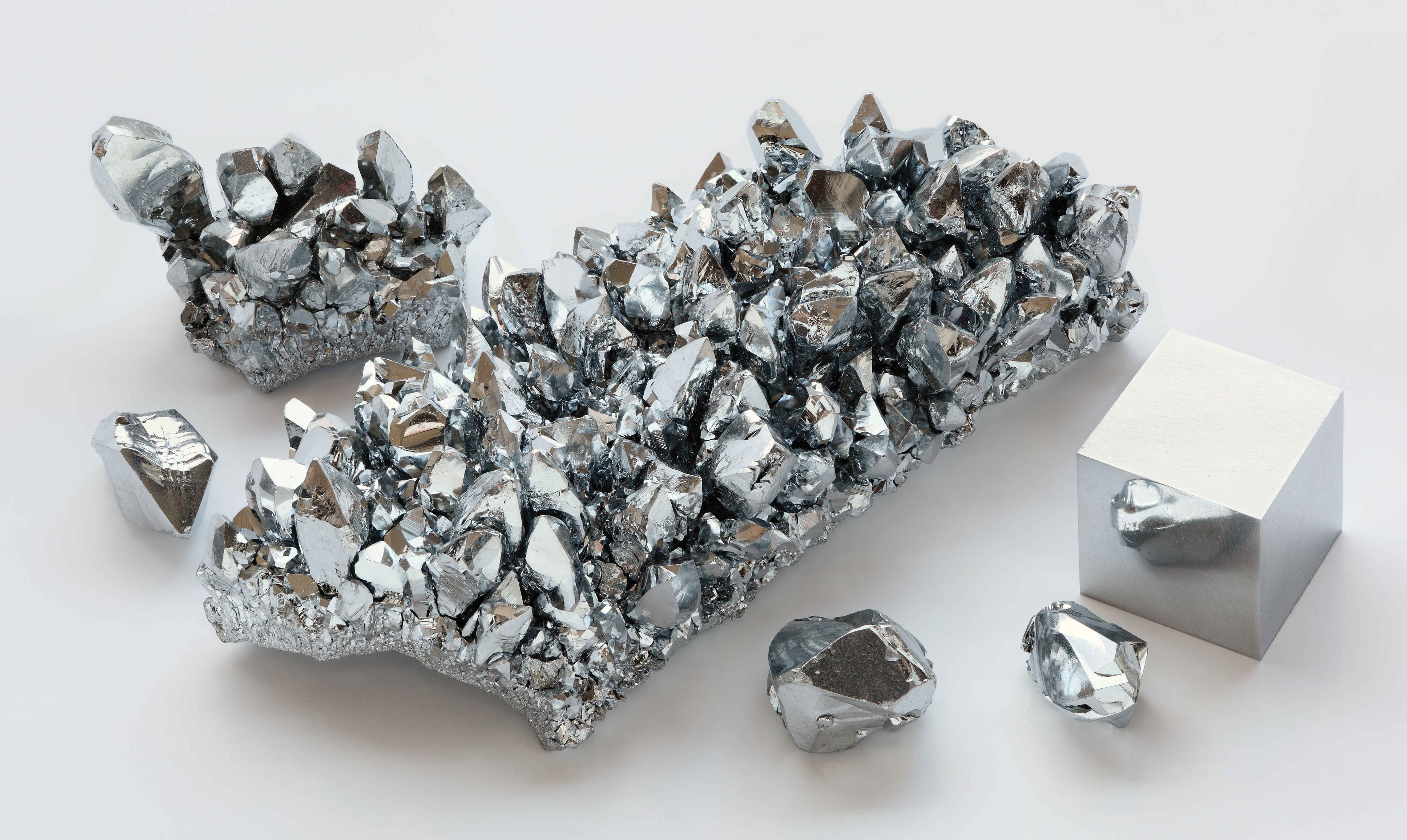
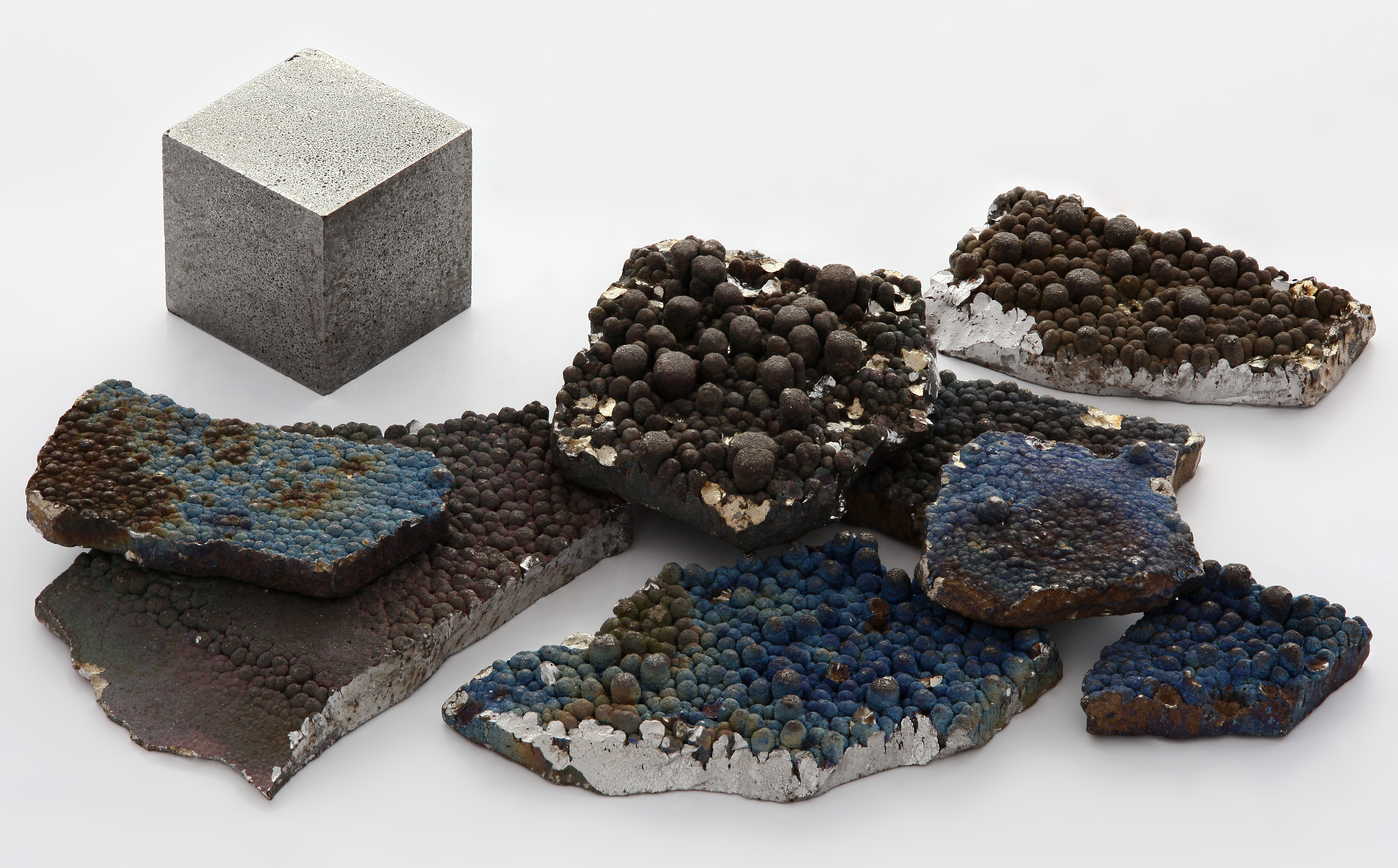




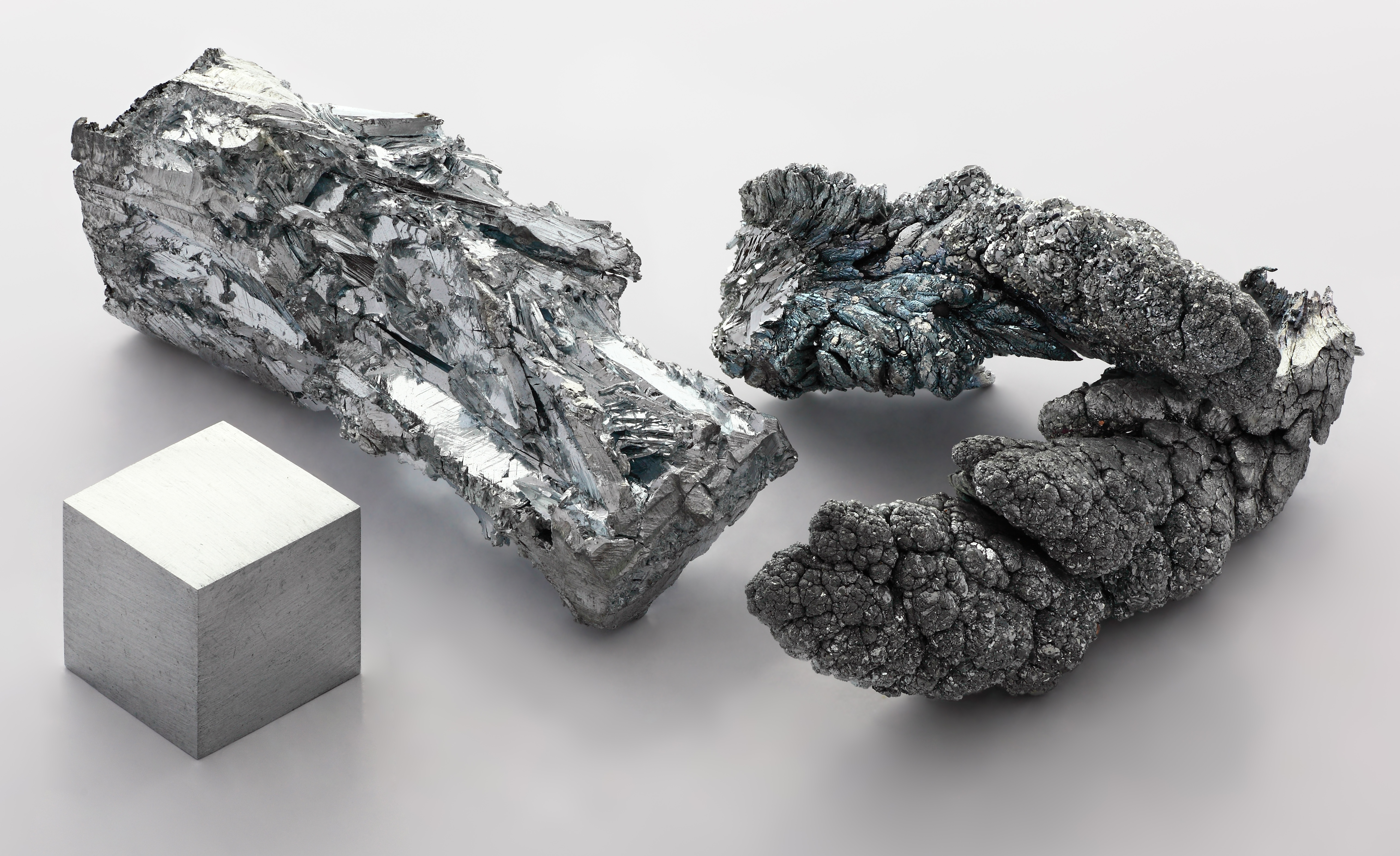
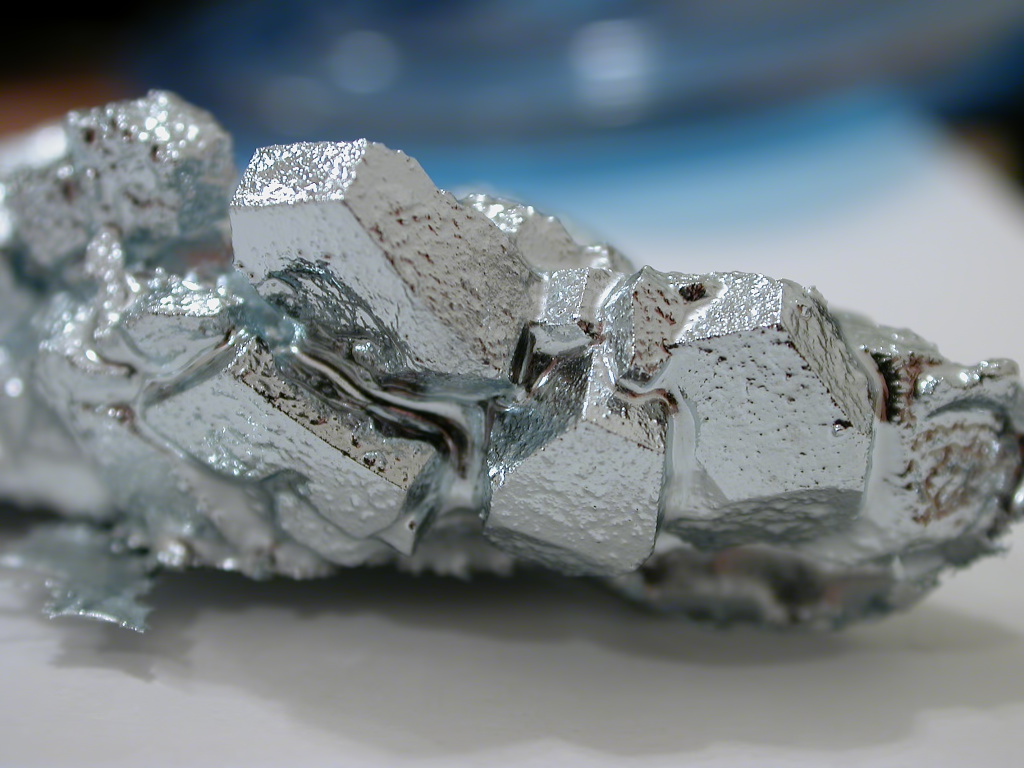





chemical element
A chemical element is a chemical substance whose atoms all have the same number of protons. The number of protons is called the atomic number of that element. For example, oxygen has an atomic number of 8: each oxygen atom has 8 protons in its ...
s in the fourth row (or period) of the periodic table of the chemical elements. The periodic table is laid out in rows to illustrate recurring (periodic) trends in the chemical behaviour of the elements as their atomic number increases: a new row is begun when chemical behaviour begins to repeat, meaning that elements with similar behaviour fall into the same vertical columns. The fourth period contains 18 elements beginning with potassium and ending with krypton
Krypton (from 'the hidden one') is a chemical element; it has symbol (chemistry), symbol Kr and atomic number 36. It is a colorless, odorless noble gas that occurs in trace element, trace amounts in the Earth's atmosphere, atmosphere and is of ...
– one element for each of the eighteen groups. It sees the first appearance of d-block
A block of the periodic table is a set of elements unified by the atomic orbitals their valence electrons or vacancies lie in. The term seems to have been first used by Charles Janet. Each block is named after its characteristic orbital: s-bloc ...
(which includes transition metal
In chemistry, a transition metal (or transition element) is a chemical element in the d-block of the periodic table (groups 3 to 12), though the elements of group 12 (and less often group 3) are sometimes excluded. The lanthanide and actinid ...
s) in the table.
Properties
All 4th-period elements arestable
A stable is a building in which working animals are kept, especially horses or oxen. The building is usually divided into stalls, and may include storage for equipment and feed.
Styles
There are many different types of stables in use tod ...
, and many are extremely common in the Earth's crust
Earth's crust is its thick outer shell of rock, referring to less than one percent of the planet's radius and volume. It is the top component of the lithosphere, a solidified division of Earth's layers that includes the crust and the upper ...
and/or core
Core or cores may refer to:
Science and technology
* Core (anatomy), everything except the appendages
* Core (laboratory), a highly specialized shared research resource
* Core (manufacturing), used in casting and molding
* Core (optical fiber ...
; it is the last period with no unstable elements. Many transition metals in the period are very strong
Strong may refer to:
Education
* The Strong, an educational institution in Rochester, New York, United States
* Strong Hall (Lawrence, Kansas), an administrative hall of the University of Kansas
* Strong School, New Haven, Connecticut, United ...
, and therefore common in industry
Industry may refer to:
Economics
* Industry (economics), a generally categorized branch of economic activity
* Industry (manufacturing), a specific branch of economic activity, typically in factories with machinery
* The wider industrial sector ...
, especially iron
Iron is a chemical element; it has symbol Fe () and atomic number 26. It is a metal that belongs to the first transition series and group 8 of the periodic table. It is, by mass, the most common element on Earth, forming much of Earth's o ...
. Some are toxic
Toxicity is the degree to which a chemical substance or a particular mixture of substances can damage an organism. Toxicity can refer to the effect on a whole organism, such as an animal, bacterium, or plant, as well as the effect on a subst ...
, with all known vanadium
Vanadium is a chemical element; it has Symbol (chemistry), symbol V and atomic number 23. It is a hard, silvery-grey, malleable transition metal. The elemental metal is rarely found in nature, but once isolated artificially, the formation of an ...
compounds toxic, arsenic
Arsenic is a chemical element; it has Symbol (chemistry), symbol As and atomic number 33. It is a metalloid and one of the pnictogens, and therefore shares many properties with its group 15 neighbors phosphorus and antimony. Arsenic is not ...
one of the most well-known poison
A poison is any chemical substance that is harmful or lethal to living organisms. The term is used in a wide range of scientific fields and industries, where it is often specifically defined. It may also be applied colloquially or figurati ...
s, and bromine
Bromine is a chemical element; it has chemical symbol, symbol Br and atomic number 35. It is a volatile red-brown liquid at room temperature that evaporates readily to form a similarly coloured vapour. Its properties are intermediate between th ...
a toxic liquid. Conversely, many elements are essential to human survival, such as calcium
Calcium is a chemical element; it has symbol Ca and atomic number 20. As an alkaline earth metal, calcium is a reactive metal that forms a dark oxide-nitride layer when exposed to air. Its physical and chemical properties are most similar to it ...
, the main component in bones.
Atomic structure
Progressing towards increase ofatomic number
The atomic number or nuclear charge number (symbol ''Z'') of a chemical element is the charge number of its atomic nucleus. For ordinary nuclei composed of protons and neutrons, this is equal to the proton number (''n''p) or the number of pro ...
, the Aufbau principle
In atomic physics and quantum chemistry, the Aufbau principle (, from ), also called the Aufbau rule, states that in the ground state of an atom or ion, electrons first fill Electron shell#Subshells, subshells of the lowest available energy, the ...
causes elements of the period to put electron
The electron (, or in nuclear reactions) is a subatomic particle with a negative one elementary charge, elementary electric charge. It is a fundamental particle that comprises the ordinary matter that makes up the universe, along with up qua ...
s onto 4s, 3d, and 4p subshells, in that order. However, there are exceptions, such as chromium
Chromium is a chemical element; it has Symbol (chemistry), symbol Cr and atomic number 24. It is the first element in Group 6 element, group 6. It is a steely-grey, Luster (mineralogy), lustrous, hard, and brittle transition metal.
Chromium ...
. The first twelve elements— K, Ca, and transition metals—have from 1 to 12 valence electron
In chemistry and physics, valence electrons are electrons in the outermost shell of an atom, and that can participate in the formation of a chemical bond if the outermost shell is not closed. In a single covalent bond, a shared pair forms with b ...
s respectively, which are placed on 4s and 3d.
Twelve electrons over the electron configuration
In atomic physics and quantum chemistry, the electron configuration is the distribution of electrons of an atom or molecule (or other physical structure) in atomic or molecular orbitals. For example, the electron configuration of the neon ato ...
of argon
Argon is a chemical element; it has symbol Ar and atomic number 18. It is in group 18 of the periodic table and is a noble gas. Argon is the third most abundant gas in Earth's atmosphere, at 0.934% (9340 ppmv). It is more than twice as abu ...
reach the configuration of zinc
Zinc is a chemical element; it has symbol Zn and atomic number 30. It is a slightly brittle metal at room temperature and has a shiny-greyish appearance when oxidation is removed. It is the first element in group 12 (IIB) of the periodic tabl ...
, namely 3d10 4s2. After this element, the filled 3d subshell effectively withdraws from chemistry and the subsequent trend
A fad, trend, or craze is any form of collective behavior that develops within a culture, a generation, or social group in which a group of people enthusiastically follow an impulse for a short time period.
Fads are objects or behaviors th ...
looks much like trends in the periods 2 and 3. The p-block elements of period 4 have their valence shell
In chemistry and physics, valence electrons are electrons in the outermost shell of an atom, and that can participate in the formation of a chemical bond if the outermost shell is not closed. In a single covalent bond, a shared pair forms with b ...
composed of 4s and 4p subshells of the fourth () shell and obey the octet rule
The octet rule is a chemical rule of thumb that reflects the theory that main-group elements tend to bond in such a way that each atom has eight electrons in its valence shell, giving it the same electronic configuration as a noble gas. The ru ...
.
For quantum chemistry
Quantum chemistry, also called molecular quantum mechanics, is a branch of physical chemistry focused on the application of quantum mechanics to chemical systems, particularly towards the quantum-mechanical calculation of electronic contributions ...
namely this period sees transition from the simplified electron shell
In chemistry and atomic physics, an electron shell may be thought of as an orbit that electrons follow around an atom's nucleus. The closest shell to the nucleus is called the "1 shell" (also called the "K shell"), followed by the "2 shell" (o ...
paradigm to research of many differently-shaped subshells. The relative disposition of their energy level
A quantum mechanics, quantum mechanical system or particle that is bound state, bound—that is, confined spatially—can only take on certain discrete values of energy, called energy levels. This contrasts with classical mechanics, classical pa ...
s is governed by the interplay of various physical effects. The period's s-block metals put their differentiating electrons onto 4s despite having vacancies among nominally lower states – a phenomenon unseen in lighter elements. Contrariwise, the six elements from gallium
Gallium is a chemical element; it has Chemical symbol, symbol Ga and atomic number 31. Discovered by the French chemist Paul-Émile Lecoq de Boisbaudran in 1875,
elemental gallium is a soft, silvery metal at standard temperature and pressure. ...
to krypton
Krypton (from 'the hidden one') is a chemical element; it has symbol (chemistry), symbol Kr and atomic number 36. It is a colorless, odorless noble gas that occurs in trace element, trace amounts in the Earth's atmosphere, atmosphere and is of ...
are the heaviest where all electron shells below the valence shell are filled ''completely''. This is no longer possible in further periods due to the existence of f-subshells starting from .
List of elements
: (*) Exception to the Madelung rules-block elements
Potassium

Potassium
Potassium is a chemical element; it has Symbol (chemistry), symbol K (from Neo-Latin ) and atomic number19. It is a silvery white metal that is soft enough to easily cut with a knife. Potassium metal reacts rapidly with atmospheric oxygen to ...
(K) is an alkali metal
The alkali metals consist of the chemical elements lithium (Li), sodium (Na), potassium (K),The symbols Na and K for sodium and potassium are derived from their Latin names, ''natrium'' and ''kalium''; these are still the origins of the names ...
, underneath sodium
Sodium is a chemical element; it has Symbol (chemistry), symbol Na (from Neo-Latin ) and atomic number 11. It is a soft, silvery-white, highly reactive metal. Sodium is an alkali metal, being in group 1 element, group 1 of the peri ...
and above rubidium
Rubidium is a chemical element; it has Symbol (chemistry), symbol Rb and atomic number 37. It is a very soft, whitish-grey solid in the alkali metal group, similar to potassium and caesium. Rubidium is the first alkali metal in the group to have ...
, and the first element of period 4. One of the most reactive chemical elements, it is usually found only in compounds. It is a silvery metal that tarnishes rapidly when exposed to the oxygen
Oxygen is a chemical element; it has chemical symbol, symbol O and atomic number 8. It is a member of the chalcogen group (periodic table), group in the periodic table, a highly reactivity (chemistry), reactive nonmetal (chemistry), non ...
in air, which oxidizes it. It is soft enough to be cut with a knife and the second least-dense
Density (volumetric mass density or specific mass) is the ratio of a substance's mass to its volume. The symbol most often used for density is ''ρ'' (the lower case Greek letter rho), although the Latin letter ''D'' (or ''d'') can also be use ...
element. Potassium
Potassium is a chemical element; it has Symbol (chemistry), symbol K (from Neo-Latin ) and atomic number19. It is a silvery white metal that is soft enough to easily cut with a knife. Potassium metal reacts rapidly with atmospheric oxygen to ...
has a relatively low melting point
The melting point (or, rarely, liquefaction point) of a substance is the temperature at which it changes state of matter, state from solid to liquid. At the melting point the solid and liquid phase (matter), phase exist in Thermodynamic equilib ...
; it will melt under a small open flame. It also is less dense than water, and can, in principle, float (although it will react with any water it is exposed to).
Calcium
Calcium
Calcium is a chemical element; it has symbol Ca and atomic number 20. As an alkaline earth metal, calcium is a reactive metal that forms a dark oxide-nitride layer when exposed to air. Its physical and chemical properties are most similar to it ...
(Ca) is the second element in the period. An alkali earth metal, native
Native may refer to:
People
* '' Jus sanguinis'', nationality by blood
* '' Jus soli'', nationality by location of birth
* Indigenous peoples, peoples with a set of specific rights based on their historical ties to a particular territory
** Nat ...
calcium is almost never found in nature, because it reacts with water. It has one of the most widely-known biological roles in all animals and some plants, making up structural elements such as bones and teeth. It also has applications in cells, such as signals for cellular processes
The cell is the basic structural and functional unit of all life, forms of life. Every cell consists of cytoplasm enclosed within a Cell membrane, membrane; many cells contain organelles, each with a specific function. The term comes from the ...
es. It is regarded as the most abundant mineral
In geology and mineralogy, a mineral or mineral species is, broadly speaking, a solid substance with a fairly well-defined chemical composition and a specific crystal structure that occurs naturally in pure form.John P. Rafferty, ed. (2011): Mi ...
in the human body.
d-block elements
Scandium

Scandium
Scandium is a chemical element; it has Symbol (chemistry), symbol Sc and atomic number 21. It is a silvery-white metallic d-block, d-block element. Historically, it has been classified as a rare-earth element, together with yttrium and the lantha ...
(Sc) is the third element in the period, and is the first transition metal
In chemistry, a transition metal (or transition element) is a chemical element in the d-block of the periodic table (groups 3 to 12), though the elements of group 12 (and less often group 3) are sometimes excluded. The lanthanide and actinid ...
in the periodic table. Scandium is quite common in nature, but difficult to isolate because its chemistry mirrors that of the other rare earth compounds quite closely. Scandium has very few commercial applications, the major exception being aluminium
Aluminium (or aluminum in North American English) is a chemical element; it has chemical symbol, symbol Al and atomic number 13. It has a density lower than that of other common metals, about one-third that of steel. Aluminium has ...
alloy
An alloy is a mixture of chemical elements of which in most cases at least one is a metal, metallic element, although it is also sometimes used for mixtures of elements; herein only metallic alloys are described. Metallic alloys often have prop ...
s.
Titanium
Titanium
Titanium is a chemical element; it has symbol Ti and atomic number 22. Found in nature only as an oxide, it can be reduced to produce a lustrous transition metal with a silver color, low density, and high strength, resistant to corrosion in ...
(Ti) is an element in group 4. Titanium is both one of the least dense metals and one of the strongest and most corrosion-resistant. As such, it has many applications, especially in alloys with other elements, such as iron. It is commonly used in airplane
An airplane (American English), or aeroplane (Commonwealth English), informally plane, is a fixed-wing aircraft that is propelled forward by thrust from a jet engine, Propeller (aircraft), propeller, or rocket engine. Airplanes come in a vari ...
s, golf club
A golf club is a club used to hit a golf ball in a game of golf. Each club is composed of a shaft with a grip and a club head. Woods are mainly used for long-distance fairway or tee shots; irons, the most versatile class, are used for a variety o ...
s, and other objects that must be strong, but lightweight.
Vanadium

Vanadium
Vanadium is a chemical element; it has Symbol (chemistry), symbol V and atomic number 23. It is a hard, silvery-grey, malleable transition metal. The elemental metal is rarely found in nature, but once isolated artificially, the formation of an ...
(V) is an element in group 5. Vanadium is never found in pure form in nature, but is commonly found in compounds. Vanadium is similar to titanium in many ways, such as being very corrosion-resistant, however, unlike titanium, it oxidizes in air even at room temperature. All vanadium compounds have at least some level of toxicity, with some of them being extremely toxic.
Chromium

Chromium
Chromium is a chemical element; it has Symbol (chemistry), symbol Cr and atomic number 24. It is the first element in Group 6 element, group 6. It is a steely-grey, Luster (mineralogy), lustrous, hard, and brittle transition metal.
Chromium ...
(Cr) is an element in group 6. Chromium is, like titanium and vanadium before it, extremely resistant to corrosion, and is indeed one of the main components of stainless steel
Stainless steel, also known as inox, corrosion-resistant steel (CRES), or rustless steel, is an iron-based alloy that contains chromium, making it resistant to rust and corrosion. Stainless steel's resistance to corrosion comes from its chromi ...
. Chromium also has many colorful compounds, and as such is very commonly used in pigments, such as chrome green
Chromium(III) oxide (or chromia) is an inorganic compound with the Chemical formula, formula . It is one of the principal oxides of chromium and is used as a pigment. In nature, it occurs as the rare mineral eskolaite.
Structure and properties
...
.
Manganese

Manganese
Manganese is a chemical element; it has Symbol (chemistry), symbol Mn and atomic number 25. It is a hard, brittle, silvery metal, often found in minerals in combination with iron. Manganese was first isolated in the 1770s. It is a transition m ...
(Mn) is an element in group 7. Manganese is often found in combination with iron. Manganese, like chromium before it, is an important component in stainless steel
Stainless steel, also known as inox, corrosion-resistant steel (CRES), or rustless steel, is an iron-based alloy that contains chromium, making it resistant to rust and corrosion. Stainless steel's resistance to corrosion comes from its chromi ...
, preventing the iron from rusting. Manganese is also often used in pigments, again like chromium. Manganese is also poisonous; if enough is inhaled, it can cause irreversible neurological damage.
Iron

Iron
Iron is a chemical element; it has symbol Fe () and atomic number 26. It is a metal that belongs to the first transition series and group 8 of the periodic table. It is, by mass, the most common element on Earth, forming much of Earth's o ...
(Fe) is an element in group 8. Iron is the most common on Earth among elements of the period, and probably the most well-known of them. It is the principal component of steel
Steel is an alloy of iron and carbon that demonstrates improved mechanical properties compared to the pure form of iron. Due to steel's high Young's modulus, elastic modulus, Yield (engineering), yield strength, Fracture, fracture strength a ...
. Iron-56
Iron-56 (56Fe) is the most common isotope of iron. About 91.754% of all iron is iron-56.
Of all nuclides, iron-56 has the lowest mass per nucleon. With 8.8 MeV binding energy per nucleon, iron-56 is one of the most tightly bound nuclei.
...
has the lowest energy density of any isotope of any element, meaning that it is the most massive element that can be produced in supergiant
Supergiants are among the most massive and most luminous stars. Supergiant stars occupy the top region of the Hertzsprung–Russell diagram, with absolute visual magnitudes between about −3 and −8. The temperatures of supergiant stars range ...
star
A star is a luminous spheroid of plasma (physics), plasma held together by Self-gravitation, self-gravity. The List of nearest stars and brown dwarfs, nearest star to Earth is the Sun. Many other stars are visible to the naked eye at night sk ...
s. Iron also has some applications in the human body; hemoglobin
Hemoglobin (haemoglobin, Hb or Hgb) is a protein containing iron that facilitates the transportation of oxygen in red blood cells. Almost all vertebrates contain hemoglobin, with the sole exception of the fish family Channichthyidae. Hemoglobin ...
is partly iron.
Cobalt

Cobalt
Cobalt is a chemical element; it has Symbol (chemistry), symbol Co and atomic number 27. As with nickel, cobalt is found in the Earth's crust only in a chemically combined form, save for small deposits found in alloys of natural meteoric iron. ...
(Co) is an element in group 9. Cobalt is commonly used in pigments, as many compounds of cobalt are blue in color. Cobalt is also a core component of many magnetic and high-strength alloys. The only stable isotope, cobalt-59, is an important component of vitamin B-12, while cobalt-60
Cobalt-60 (Co) is a synthetic radioactive isotope of cobalt with a half-life of 5.2714 years. It is produced artificially in nuclear reactors. Deliberate industrial production depends on neutron activation of bulk samples of the monoisotop ...
is a component of nuclear fallout and can be dangerous in large enough quantities due to its radioactivity.
Nickel

Nickel
Nickel is a chemical element; it has symbol Ni and atomic number 28. It is a silvery-white lustrous metal with a slight golden tinge. Nickel is a hard and ductile transition metal. Pure nickel is chemically reactive, but large pieces are slo ...
(Ni) is an element in group 10. Nickel is rare in the Earth's crust, mainly due to the fact that it reacts with oxygen in the air, with most of the nickel on Earth coming from nickel iron meteorites. However, nickel is very abundant in the Earth's core
The internal structure of Earth are the layers of the Earth, excluding its atmosphere and hydrosphere. The structure consists of an outer silicate solid crust, a highly viscous asthenosphere, and solid mantle, a liquid outer core whose flow g ...
; along with iron it is one of the two main components. Nickel is an important component of stainless steel, and in many superalloys
A superalloy, or high-performance alloy, is an alloy with the ability to operate at a high fraction of its melting point. Key characteristics of a superalloy include mechanical strength, Creep (deformation), thermal creep deformation resistance, ...
.
Copper

Copper
Copper is a chemical element; it has symbol Cu (from Latin ) and atomic number 29. It is a soft, malleable, and ductile metal with very high thermal and electrical conductivity. A freshly exposed surface of pure copper has a pinkish-orang ...
(Cu) is an element in group 11. Copper is one of the few metals that is not white or gray in color, the only others being gold
Gold is a chemical element; it has chemical symbol Au (from Latin ) and atomic number 79. In its pure form, it is a brightness, bright, slightly orange-yellow, dense, soft, malleable, and ductile metal. Chemically, gold is a transition metal ...
, osmium
Osmium () is a chemical element; it has Symbol (chemistry), symbol Os and atomic number 76. It is a hard, brittle, bluish-white transition metal in the platinum group that is found as a Abundance of elements in Earth's crust, trace element in a ...
and caesium
Caesium (IUPAC spelling; also spelled cesium in American English) is a chemical element; it has Symbol (chemistry), symbol Cs and atomic number 55. It is a soft, silvery-golden alkali metal with a melting point of , which makes it one of only f ...
. Copper has been used by humans for thousands of years to provide a reddish tint to many objects, and is even an essential nutrient to humans, although too much is poisonous. Copper is also commonly used as a wood preservative or fungicide
Fungicides are pesticides used to kill parasitic fungi or their spores. Fungi can cause serious damage in agriculture, resulting in losses of yield and quality. Fungicides are used both in agriculture and to fight fungal infections in animals, ...
s.
Zinc

Zinc
Zinc is a chemical element; it has symbol Zn and atomic number 30. It is a slightly brittle metal at room temperature and has a shiny-greyish appearance when oxidation is removed. It is the first element in group 12 (IIB) of the periodic tabl ...
(Zn) is an element in group 12. Zinc is one of the main components of brass
Brass is an alloy of copper and zinc, in proportions which can be varied to achieve different colours and mechanical, electrical, acoustic and chemical properties, but copper typically has the larger proportion, generally copper and zinc. I ...
, being used since the 10th century BCE. Zinc is also incredibly important to humans; almost 2 billion people in the world suffer from zinc deficiency. However, too much zinc can cause copper deficiency. Zinc is often used in batteries, aptly named carbon-zinc batteries, and is important in many platings, as zinc is very corrosion resistant.
p-block elements
Gallium

Gallium
Gallium is a chemical element; it has Chemical symbol, symbol Ga and atomic number 31. Discovered by the French chemist Paul-Émile Lecoq de Boisbaudran in 1875,
elemental gallium is a soft, silvery metal at standard temperature and pressure. ...
(Ga) is an element in group 13, under aluminium
Aluminium (or aluminum in North American English) is a chemical element; it has chemical symbol, symbol Al and atomic number 13. It has a density lower than that of other common metals, about one-third that of steel. Aluminium has ...
. Gallium is noteworthy because it has a melting point at about 303 kelvin
The kelvin (symbol: K) is the base unit for temperature in the International System of Units (SI). The Kelvin scale is an absolute temperature scale that starts at the lowest possible temperature (absolute zero), taken to be 0 K. By de ...
s, right around room temperature. For example, it will be solid on a typical spring day, but will be liquid on a hot summer day. Gallium is an important component in the alloy galinstan
Galinstan is a brand name for an alloy composed of gallium, indium, and tin which melts at and is thus liquid at room temperature. In scientific literature, galinstan is also used to denote the eutectic alloy of gallium, indium, and tin, which ...
, along with tin. Gallium can also be found in semiconductors.
Germanium

Germanium
Germanium is a chemical element; it has Symbol (chemistry), symbol Ge and atomic number 32. It is lustrous, hard-brittle, grayish-white and similar in appearance to silicon. It is a metalloid or a nonmetal in the carbon group that is chemically ...
(Ge) is an element in group 14. Germanium, like silicon
Silicon is a chemical element; it has symbol Si and atomic number 14. It is a hard, brittle crystalline solid with a blue-grey metallic lustre, and is a tetravalent metalloid (sometimes considered a non-metal) and semiconductor. It is a membe ...
above it, is an important semiconductor
A semiconductor is a material with electrical conductivity between that of a conductor and an insulator. Its conductivity can be modified by adding impurities (" doping") to its crystal structure. When two regions with different doping level ...
and is commonly used in diodes and transistors, often in combination with arsenic. Germanium is fairly rare on Earth, leading to its comparatively late discovery. Germanium, in compounds, can sometimes irritate the eyes, skin, or lungs.
Arsenic

Arsenic
Arsenic is a chemical element; it has Symbol (chemistry), symbol As and atomic number 33. It is a metalloid and one of the pnictogens, and therefore shares many properties with its group 15 neighbors phosphorus and antimony. Arsenic is not ...
(As) is an element in group 15, the pnictogens. Arsenic, as mentioned above, is often used in semiconductors in alloys with germanium. Arsenic, in pure form and some alloys, is incredibly poisonous to all multicellular life, and as such is a common component in pesticides. Arsenic was also used in some pigments before its toxicity was discovered.
Selenium

Selenium
Selenium is a chemical element; it has symbol (chemistry), symbol Se and atomic number 34. It has various physical appearances, including a brick-red powder, a vitreous black solid, and a grey metallic-looking form. It seldom occurs in this elem ...
(Se) is an element in group 16, the chalcogens. Selenium is the first nonmetal in period 4, with properties similar to sulfur
Sulfur ( American spelling and the preferred IUPAC name) or sulphur ( Commonwealth spelling) is a chemical element; it has symbol S and atomic number 16. It is abundant, multivalent and nonmetallic. Under normal conditions, sulfur atoms ...
. Selenium is quite rare in pure form in nature, mostly being found in minerals such as pyrite
The mineral pyrite ( ), or iron pyrite, also known as fool's gold, is an iron sulfide with the chemical formula Fe S2 (iron (II) disulfide). Pyrite is the most abundant sulfide mineral.
Pyrite's metallic luster and pale brass-yellow hue ...
, and even then it is quite rare. Selenium is necessary for humans in trace amounts, but is toxic in larger quantities. Selenium is red in monomolar structure but metallic gray in its crystalline structure.
Bromine

Bromine
Bromine is a chemical element; it has chemical symbol, symbol Br and atomic number 35. It is a volatile red-brown liquid at room temperature that evaporates readily to form a similarly coloured vapour. Its properties are intermediate between th ...
(Br) is an element in group 17 (halogen). It does not exist in elemental form in nature. Bromine is barely liquid at room temperature, boiling at about 330 kelvins. Bromine is also quite toxic and corrosive, but bromide ions, which are relatively inert, can be found in halite
Halite ( ), commonly known as rock salt, is a type of salt, the mineral (natural) form of sodium chloride ( Na Cl). Halite forms isometric crystals. The mineral is typically colorless or white, but may also be light blue, dark blue, purple, pi ...
, or table salt. Bromine is often used as a fire retardant
A fire retardant is a substance that is used to slow down or stop the spread of fire or reduce its intensity. This is commonly accomplished by chemical reactions that reduce the flammability of fuels or delay their combustion. Fire retardants ...
because many compounds can be made to release free bromine atoms.
Krypton

Krypton
Krypton (from 'the hidden one') is a chemical element; it has symbol (chemistry), symbol Kr and atomic number 36. It is a colorless, odorless noble gas that occurs in trace element, trace amounts in the Earth's atmosphere, atmosphere and is of ...
(Kr) is a noble gas
The noble gases (historically the inert gases, sometimes referred to as aerogens) are the members of Group (periodic table), group 18 of the periodic table: helium (He), neon (Ne), argon (Ar), krypton (Kr), xenon (Xe), radon (Rn) and, in some ...
, placed under argon
Argon is a chemical element; it has symbol Ar and atomic number 18. It is in group 18 of the periodic table and is a noble gas. Argon is the third most abundant gas in Earth's atmosphere, at 0.934% (9340 ppmv). It is more than twice as abu ...
and over xenon
Xenon is a chemical element; it has symbol Xe and atomic number 54. It is a dense, colorless, odorless noble gas found in Earth's atmosphere in trace amounts. Although generally unreactive, it can undergo a few chemical reactions such as the ...
. Being a noble gas, krypton rarely interacts with itself or other elements; although compounds have been detected, they are all unstable and decay rapidly, and as such, krypton is often used in fluorescent lights. Krypton, like most noble gases, is also used in lighting because of its many spectral lines and the aforementioned reasons.
Biological role
Many period 4 elements find roles in controlling protein function as secondary messengers, structural components, or enzyme cofactors. A gradient of potassium is used by cells to maintain amembrane potential
Membrane potential (also transmembrane potential or membrane voltage) is the difference in electric potential between the interior and the exterior of a biological cell. It equals the interior potential minus the exterior potential. This is th ...
which enables neurotransmitter firing and facilitated diffusion
Facilitated diffusion (also known as facilitated transport or passive-mediated transport) is the process of spontaneous passive transport (as opposed to active transport) of molecules or ions across a biological membrane via specific transmembr ...
among other processes. Calcium is a common signaling molecule for proteins such as calmodulin
Calmodulin (CaM) (an abbreviation for calcium-modulated protein) is a multifunctional intermediate calcium-binding messenger protein expressed in all Eukaryote, eukaryotic cells. It is an intracellular target of the Second messenger system, sec ...
and plays a critical role in triggering skeletal muscle contraction in vertebrates. Selenium is a component of the noncanonical amino acid
Amino acids are organic compounds that contain both amino and carboxylic acid functional groups. Although over 500 amino acids exist in nature, by far the most important are the 22 α-amino acids incorporated into proteins. Only these 22 a ...
, selenocysteine
Selenocysteine (symbol Sec or U, in older publications also as Se-Cys) is the 21st proteinogenic amino acid. Selenoproteins contain selenocysteine residues. Selenocysteine is an analogue of the more common cysteine with selenium in place of the ...
; proteins which contain selenocysteine are known as selenoprotein In molecular biology a selenoprotein is any protein that includes a selenocysteine (Sec, U, Se-Cys) amino acid residue. Among functionally characterized selenoproteins are five glutathione peroxidases (GPX) and three thioredoxin reductases, (TrxR/TX ...
s. Manganese enzymes are utilized by both eukaryote
The eukaryotes ( ) constitute the Domain (biology), domain of Eukaryota or Eukarya, organisms whose Cell (biology), cells have a membrane-bound cell nucleus, nucleus. All animals, plants, Fungus, fungi, seaweeds, and many unicellular organisms ...
s and prokaryote
A prokaryote (; less commonly spelled procaryote) is a unicellular organism, single-celled organism whose cell (biology), cell lacks a cell nucleus, nucleus and other membrane-bound organelles. The word ''prokaryote'' comes from the Ancient Gree ...
s, and may play a role in the virulence of some pathogenic bacteria. Vanabins, also known as vanadium-associated proteins, are found in the blood cells of some species of sea squirts. The role of these proteins is disputed, although there is some speculation that they function as oxygen carriers. Zinc ions are used to stabilize the zinc finger
A zinc finger is a small protein structural motif that is characterized by the coordination of one or more zinc ions (Zn2+) which stabilizes the fold. The term ''zinc finger'' was originally coined to describe the finger-like appearance of a ...
milieu
The social environment, social context, sociocultural context or milieu refers to the immediate physical and social setting in which people live or in which something happens or develops. It includes the culture that the individual was educated ...
of many DNA-binding protein
DNA-binding proteins are proteins that have DNA-binding domains and thus have a specific or general affinity for single- or double-stranded DNA. Sequence-specific DNA-binding proteins generally interact with the major groove of B-DNA, becau ...
s.
Period 4 elements can also be found complexed with organic small molecule
In molecular biology and pharmacology, a small molecule or micromolecule is a low molecular weight (≤ 1000 daltons) organic compound that may regulate a biological process, with a size on the order of 1 nm. Many drugs are small molecules; ...
s to form cofactors. The most famous example of this is heme
Heme (American English), or haem (Commonwealth English, both pronounced /Help:IPA/English, hi:m/ ), is a ring-shaped iron-containing molecule that commonly serves as a Ligand (biochemistry), ligand of various proteins, more notably as a Prostheti ...
: an iron-containing porphyrin compound responsible for the oxygen-carrying function of myoglobin
Myoglobin (symbol Mb or MB) is an iron- and oxygen-binding protein found in the cardiac and skeletal muscle, skeletal Muscle, muscle tissue of vertebrates in general and in almost all mammals. Myoglobin is distantly related to hemoglobin. Compar ...
and hemoglobin
Hemoglobin (haemoglobin, Hb or Hgb) is a protein containing iron that facilitates the transportation of oxygen in red blood cells. Almost all vertebrates contain hemoglobin, with the sole exception of the fish family Channichthyidae. Hemoglobin ...
as well as the catalytic activity of cytochrome enzymes. Hemocyanin
Hemocyanins (also spelled haemocyanins and abbreviated Hc) are proteins that transport oxygen throughout the bodies of some invertebrate animals. These metalloproteins contain two copper atoms that reversibly bind a single oxygen molecule (O2 ...
replaces hemoglobin as the oxygen carrier of choice in the blood of certain invertebrates, including horseshoe crab
Horseshoe crabs are arthropods of the family Limulidae and the only surviving xiphosurans. Despite their name, they are not true crabs or even crustaceans; they are chelicerates, more closely related to arachnids like spiders, ticks, and scor ...
s, tarantula
Tarantulas comprise a group of large and often hairy spiders of the family Theraphosidae. , 1,100 species have been identified, with 166 genera. The term "tarantula" is usually used to describe members of the family Theraphosidae, although ...
s, and octopus
An octopus (: octopuses or octopodes) is a soft-bodied, eight-limbed mollusc of the order Octopoda (, ). The order consists of some 300 species and is grouped within the class Cephalopoda with squids, cuttlefish, and nautiloids. Like oth ...
es. Vitamin B12 represents one of the few biochemical applications for cobalt.
References